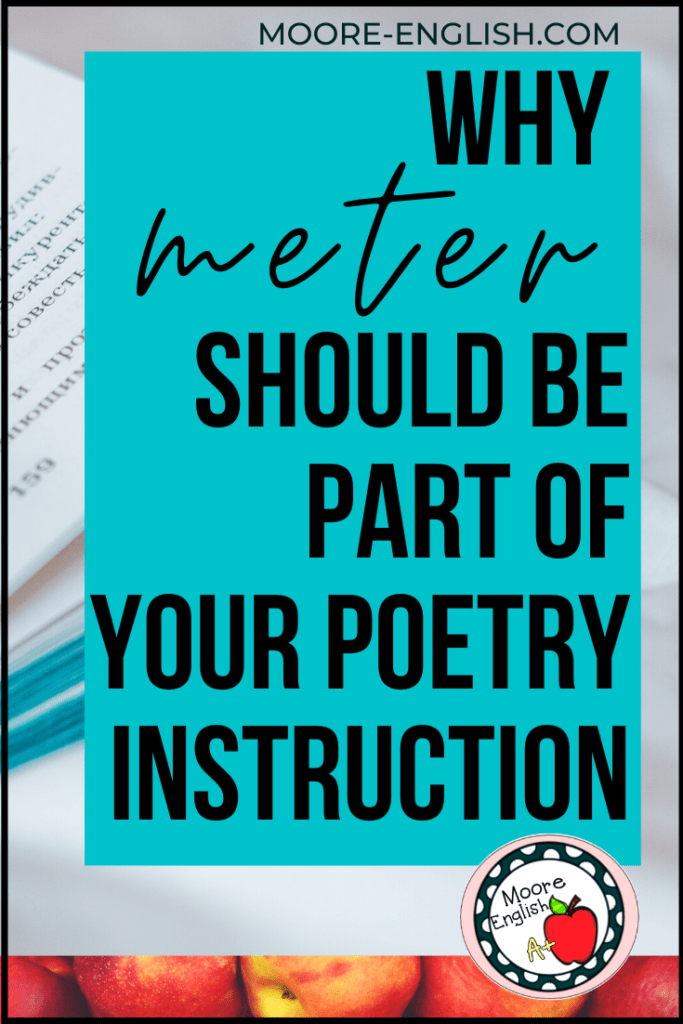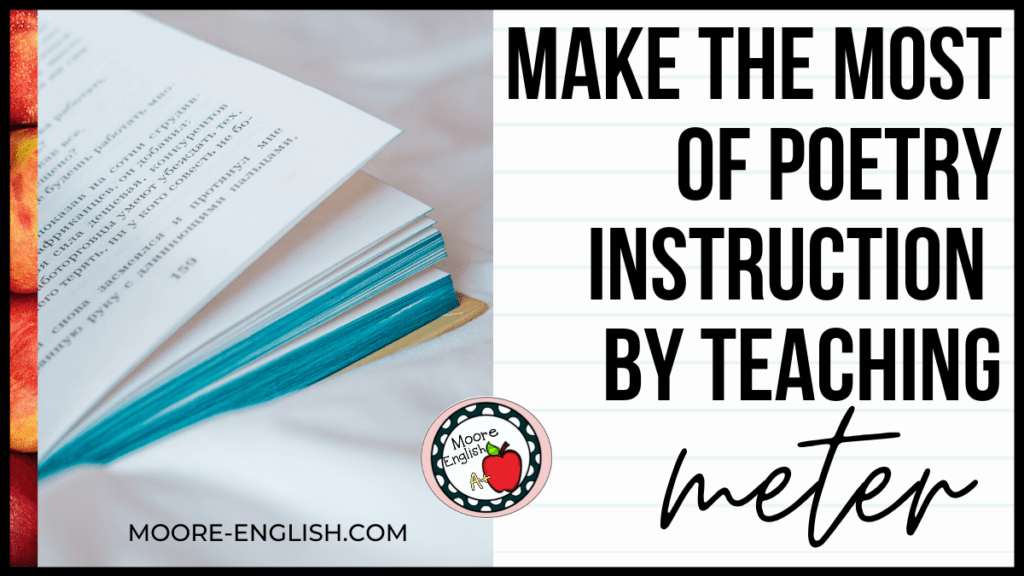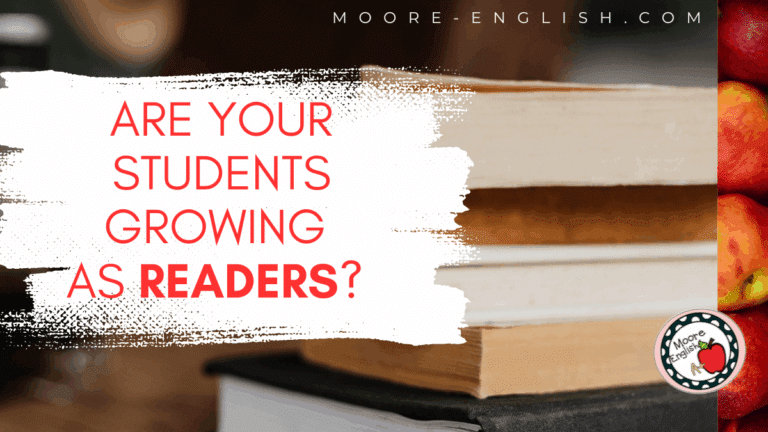Let’s get the obvious out of the way: poetic meter is confusing. Dactyls and trochees and anapests–who can keep them all straight?
While asking students to memorize the technical names for all parts of meter is a great way to kill a love of poetry, this doesn’t mean that you should omit meter from your poetry instruction.
Instead, make this part of your poetry instruction. Analyzing meter helps students understand poetic structure, theme, and historical context. So here’s the secret to incorporating meter into your poetry unit.
This post this post may contain affiliate links. Please read the Terms of Use.
The Secret to Incorporating Meter Into Your Poetry Instruction
Keep it simple.
That’s the secret to incorporating meter into your poetry instruction.
While it’s easy to get hung up on technical terms, few curricula ask high school students to learn metrical vocabulary.
Instead, just ask students to count syllables and keep track of the number of syllables in each line of poetry. If students can count the syllables in a line of poetry, they can unlock new and deeper levels of meaning. With this, students can analyze texts with more depth and produce new insights.
One easy way to incorporate meter is to make it part of your pre-reading strategy. Once students master using these tools, they can add to their close reading. Before students even read a poem, they can begin making predictions about the poem’s structure.
4 Reasons Meter Counts
Excuse the pun, but meter counts. And here are four reasons it matters.
Text Structure: Understanding poetic meter helps students understand poetic structure. Changes in meter often anticipate or reveal the poetic turn or shift. Being able to identify the location of the poetic turn or shift helps students understand how the text works. Seeing the inner workings of a text helps students analyze author’s craft and meaning.
Main Idea: Once students can identify the location of a poetic turn, they have a good idea of where the poet points toward main idea or theme. Identifying main idea is an essential skill for readers. But the brevity of poetry can complicate this pursuit, so being able to find changes in meter can help. Here are 10 poems to help students practice identifying main idea.
Historical Context: Analyzing historical context is an essential Common Core standard. And the way a poet uses meter can reveal a lot about his or her historical context and/or literary movement. The movement from highly structured, well-organized poetry to free verse is an important part of literary history. For example, William Cullen Bryant, Emily Dickinson, and Walt Whitman are all Romantic poets. However, Bryant’s poems are highly structured and regular. Dickinson uses her trademark blank verse and slant rhyme. And Walt Whitman really brings free verse into American literature. An understanding of poetic meter helps students see the progression of American poetry and the developments that led to the contemporary poetry. Understanding this helps students place literature in its historical context.
Bottom Line
Poetic meter isn’t for everyone. Some teachers are stumped by all the vocabulary. So take the pressure off yourself. You don’t have to be an expert in scansion to help students count the syllables in each line of a poem. Keep the process simple, and you’ll be able to guide students through complex texts. With this in mind, students will be able to access and analyze poems at greater depth!









